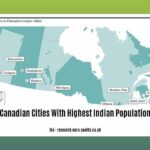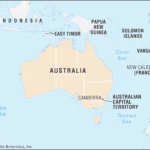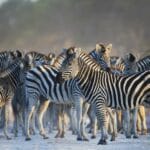Imagine the Arabian Peninsula and North Africa – bustling cities booming! This article explores the incredible growth happening in their capital cities, the problems they face, and the innovative ways they’re addressing them. It’s a comprehensive look at the opportunities and challenges these dynamic urban centers face in the 21st century.
Analyzing Growth Patterns in Arabian Capital Cities
Arabian capital cities are a captivating blend of ancient heritage and rapid modernization. Cairo, the Arab world’s largest city, exemplifies this duality. However, each city possesses a unique narrative, creating a vibrant tapestry of history, rapid population increases, and evolving political landscapes.
Tracing the Historical Evolution of Arab Capitals
Many Arabian capitals boast histories stretching back millennia. Baghdad’s golden age stands as a testament to its historical influence as a center of learning and trade. In contrast, cities like Riyadh have experienced exponential growth in recent decades, transforming into major metropolises due to oil wealth and strategic development initiatives. Other ancient cities like Damascus, Sana’a and Beirut have seen continuous habitation for thousands of years. Understanding these varied historical trajectories is vital for informed urban planning.
Understanding Population Dynamics in Arabian Cities
Obtaining precise, up-to-date population figures for these cities can be challenging for many reasons, including varying census methodologies, the inclusion (or exclusion) of surrounding metropolitan areas, and migration patterns. Despite these ambiguities, Cairo consistently ranks as the most populous, while cities like Riyadh, Baghdad, and Amman also demonstrate considerable population expansion. These population surges are influenced by factors such as economic opportunity, political stability (or lack thereof), and access to resources.
The Impact of Geopolitics on Urban Development
Geopolitical instability significantly impacts urban development in the Arab world. Conflicts in Syria, Yemen, and other regions have led to massive displacement and migration, placing immense strain on the infrastructure and resources of receiving cities. These sudden demographic shifts necessitate agile urban planning and resource allocation. International aid organizations and local governments must collaborate to address the needs of displaced populations while also ensuring the long-term sustainability of urban areas.
Key Priorities for Stakeholders
The following delineates key priorities for stakeholders involved in the sustainable development of Arabian capital cities:
- Urban Planners: Address immediate housing shortages and infrastructure deficits while developing long-term sustainable urban development plans that prioritize efficient resource management and environmental protection.
- Governments: Tackle socio-economic inequalities, improve public transportation networks, and create employment opportunities in the short term, while simultaneously investing in long-term infrastructure projects, strengthening governance, and enhancing public services.
- International Aid Organizations: Provide immediate support to displaced populations and contribute to essential infrastructure projects. Focus on promoting sustainable development initiatives, strengthening local government capabilities, and fostering resilience in the long term.
- Private Sector: Invest in affordable housing, commercial real estate, and public transportation systems. Drive innovation in sustainable technologies and contribute to the development of vital infrastructure projects.
These challenges also present unique opportunities. By embracing sustainable urban development practices, enhancing public services, and implementing innovative infrastructure improvements, these cities can transform themselves into resilient and prosperous urban environments.
Strategies for Mitigating Urban Planning Challenges
Rapid urbanization in Arabian capital cities presents a multitude of challenges, ranging from water scarcity and inadequate infrastructure to affordable housing shortages and environmental degradation. Addressing these challenges requires comprehensive and integrated strategies that promote sustainable and inclusive growth.
Infrastructure Solutions in Arabian Metropolises
As Arabian capital cities grow, existing infrastructure systems often struggle to keep pace. Water scarcity, traffic congestion, and overburdened energy grids are pressing concerns. Addressing these challenges requires innovative infrastructure solutions, such as smart water management systems, efficient public transportation networks, and investments in renewable energy sources. Pilot projects can serve as valuable testing grounds for these solutions.
Addressing the Affordable Housing Crisis
The growing demand for affordable housing in many Arabian cities contributes to social inequality and economic disparities. Governments can encourage the development of affordable housing through incentives for private developers, public-private partnerships, and the implementation of innovative financing mechanisms. Sustainable building techniques and efficient land use are essential for maximizing the availability of affordable housing options.
Promoting Environmental Sustainability
Balancing urban development with environmental protection is of paramount importance. Sustainable urban planning promotes green spaces, reduces carbon emissions, and manages waste effectively. Investment in renewable energy sources, green building standards, and comprehensive waste management programs are critical for mitigating the environmental impact of urbanization.
Ensuring Social Equity and Inclusion
Inclusive urban planning prioritizes the needs of all residents, regardless of their socio-economic status, ethnicity, or background. This involves ensuring equitable access to affordable housing, healthcare, education, and essential services. Community engagement, participatory planning processes, and transparent governance are essential for achieving social equity and creating a sense of belonging and shared opportunity.
The Role of Technology in Urban Development
Smart city solutions can optimize resource management, improve public services, and enhance the quality of life for urban residents. Data-driven urban planning allows for precise resource allocation and informed decision-making. Integrating technology effectively, while ensuring digital inclusivity through digital literacy programs and accessible technologies, is a key priority.
Reforming Governance and Finance
Effective governance structures and sound financial management are crucial for sustainable urban development. Transparent and accountable governance fosters trust and attracts investment. International organizations can provide valuable assistance by offering expertise, facilitating collaborations, and sharing best practices.
Fostering Collaboration and Capacity Building
Successful urban development hinges on collaboration among various stakeholders. Governments, urban planners, the private sector, community organizations, and international partners must work together to address complex challenges and achieve shared goals. Capacity building programs can equip local professionals with the skills and knowledge needed to manage urban growth effectively.
Key Factors:
- Adopting smart infrastructure solutions and implementing pilot projects to address infrastructure deficits.
- Providing government incentives and fostering private sector participation in affordable housing development.
- Mandating green building standards and promoting renewable energy sources to enhance environmental sustainability.
- Prioritizing community engagement and inclusive planning to ensure social equity.
- Optimizing urban management through the strategic application of technology and ensuring digital inclusivity.
- Implementing strong governance structures and sound financial reforms to facilitate long-term success.
- Fostering collaboration among stakeholders and investing in capacity building programs to promote sustainable urban development.
Sustainable Urban Development Strategies
Rapid urbanization necessitates the implementation of sustainable strategies that address environmental, social, and economic considerations. This involves ensuring the availability of green spaces, promoting digital solutions, prioritizing equitable access to resources and opportunities, and incorporating culturally sensitive design principles.
Ensuring Green Spaces for Well-being
Ensuring access to sufficient green spaces is essential for promoting the well-being of urban residents, mitigating the urban heat island effect, and improving air quality. Creating vibrant, well-maintained green spaces where people can connect with nature and each other is crucial for fostering a healthy urban environment.
Green Equity and Accessibility
Access to green spaces is often unevenly distributed in Arabian megacities, with underserved neighborhoods lacking adequate parks and recreational areas. Addressing this imbalance through innovative and inclusive solutions is crucial for promoting environmental justice. This involves prioritizing investment in underserved neighborhoods and ensuring equitable access to green spaces for all residents.
Smart Cities for Resilient Progress
Smart city initiatives can optimize resource management, enhance public safety, and strengthen emergency response systems. However, it is essential to develop strategies that are tailored to the specific cultural and social contexts of Arabian cities.
Cultural Sensitivity: Designing with Tradition
Urban planners must consider the region’s rich cultural heritage when designing green spaces and urban infrastructure. Incorporating traditional architectural elements and respecting local customs and values can create a sense of place and identity. This approach also helps to ensure that urban development is sustainable and culturally appropriate.
Multi-Stakeholder Collaboration
Governments, urban planners, the private sector, and community organizations must work together to achieve sustainable urban development goals. Governments can create enabling policies and provide financial incentives. Urban planners can design sustainable and inclusive spaces. The private sector can invest in innovative technologies and develop sustainable solutions. Community organizations can advocate for equitable access to resources and opportunities.
Overcoming Infrastructure Development Challenges
Rapid urbanization places immense strain on resources and infrastructure across Arabian capital cities. Successful infrastructure development requires efficient planning, sustainable practices, and strategic investment.
Managing Rapid Urban Growth
The rapid pace of urbanization in Arabian capital cities presents significant challenges for infrastructure development. Existing infrastructure systems often struggle to keep pace with the growing demands of the population, leading to overcrowded cities and strained resources.
Key Obstacles to Infrastructure Development
Several key obstacles hinder effective infrastructure development:
- Resource Constraints: Limited access to water, energy, and other essential resources.
- Bureaucratic Hurdles: Complex regulatory processes and lengthy approval timelines.
- Funding Gaps: Insufficient financial resources to support large-scale infrastructure projects.
- Skills Shortages: A lack of skilled professionals in engineering, construction, and urban planning.
- Social Equity Issues: Uneven distribution of infrastructure benefits and limited access for marginalized communities.
- Climate Change: Increased vulnerability to extreme weather events and the need for climate-resilient infrastructure.
Effective Infrastructure Solutions
Addressing these challenges requires a multifaceted approach:
- Streamlined Governance: Promote collaboration among government agencies and streamline regulatory processes.
- Sustainable Solutions: Adopt sustainable building codes and invest in renewable energy sources.
- Strategic Investment: Attract foreign investment and leverage public-private partnerships.
- Capacity Building: Invest in education and training programs to develop a skilled workforce.
- Community Engagement: Ensure that infrastructure projects meet the needs of local communities.
- Technological Advancements: Utilize advanced technologies to improve efficiency and reduce costs.
Impact of Megaprojects
Ambitious megaprojects, such as new transportation systems and large-scale urban developments, exemplify both the
